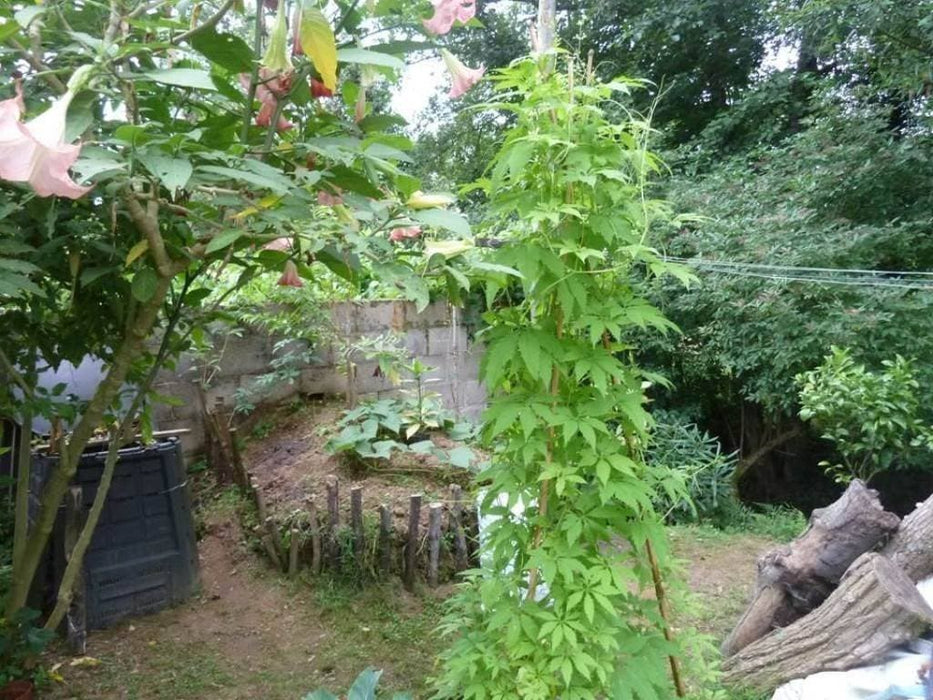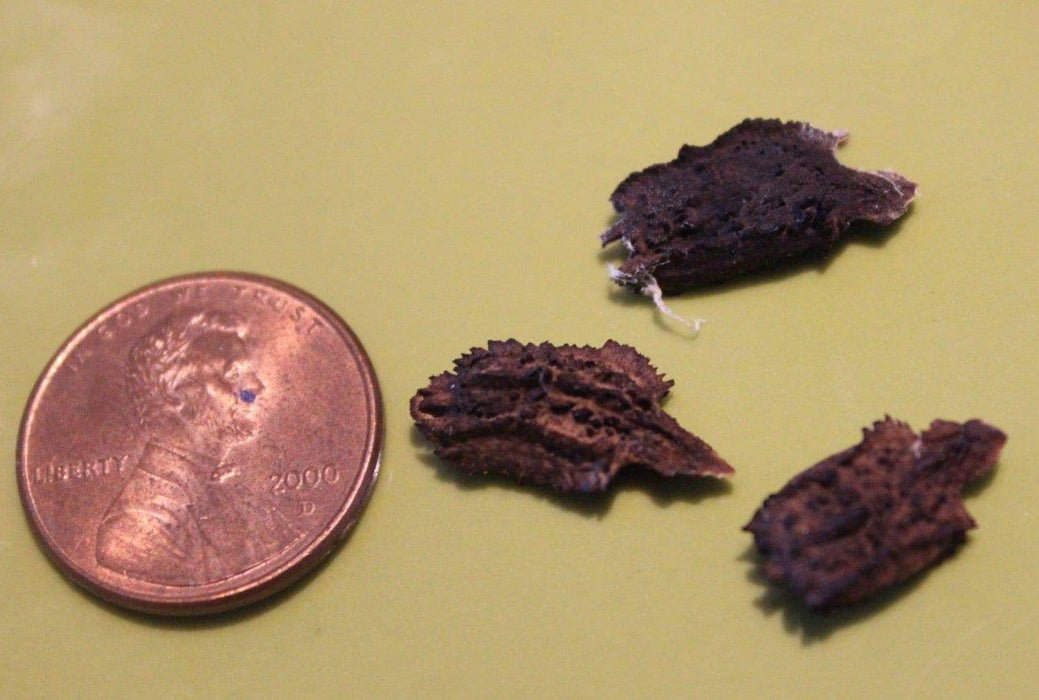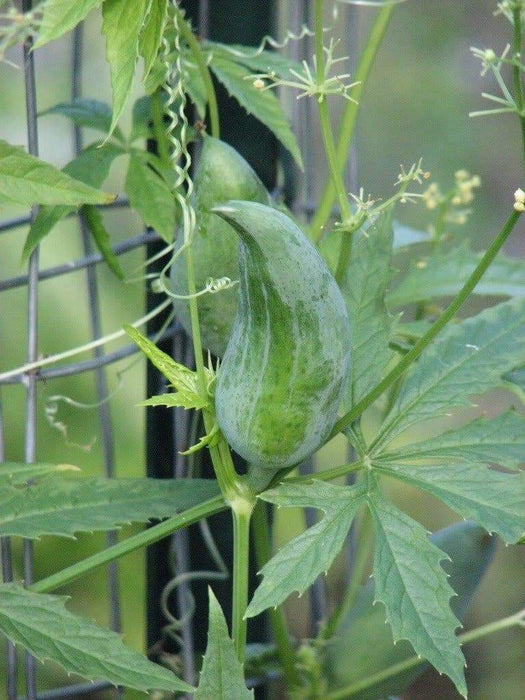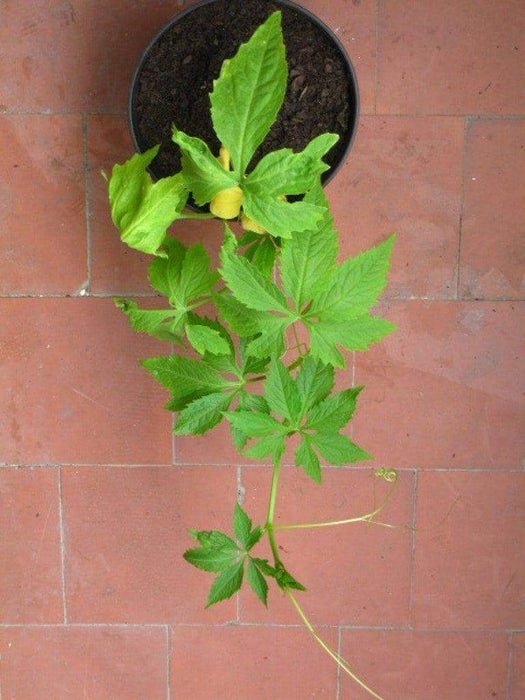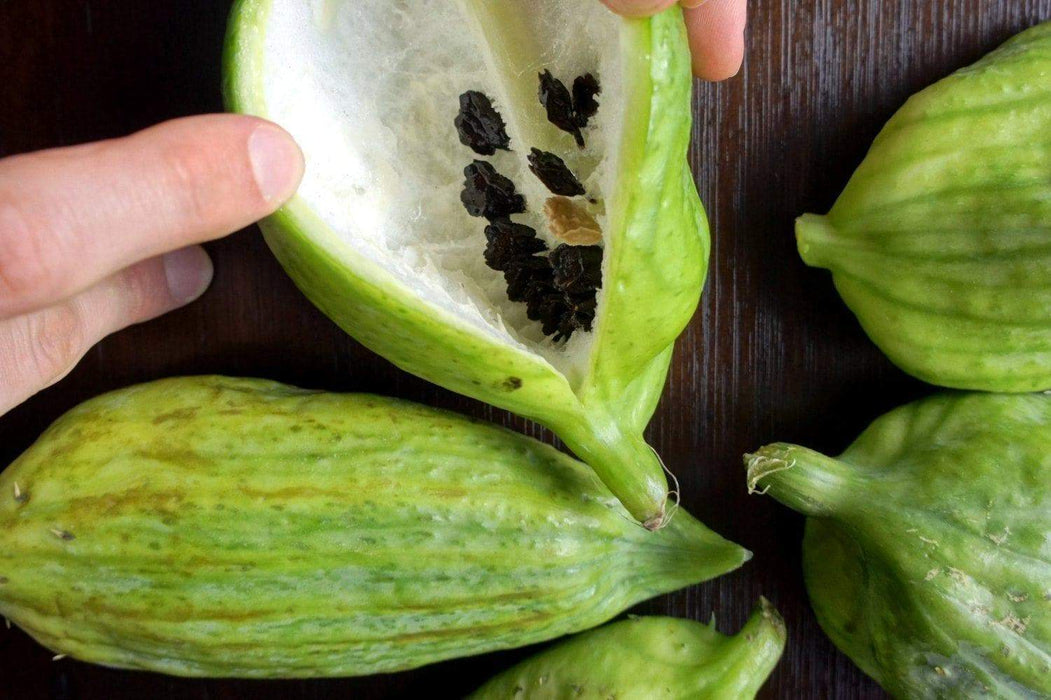
Wild Cucumber Seeds, CLIMBING GOURD
Most orders are processed by the next day
Select your desired size and/or color from the available options.
(pronounced kai-wa) Edible Cucumber,and leaves.Very Rare Cyclanthera pedata,Achocha, Caihua, Caygua, Cayua, Korila, Wild Cucumber
Cyclanthera pedata, locally known by its Quechua names kaywa or achuqcha, is a herbaceous vine grown for its edible mature fruit, which is predominantly used as a vegetable.
- Scientific name: Cyclanthera pedata
- Rank: Species
- Higher classification: Cyclanthera
- Warm season annual
- Maturity: Approx. 50-60 days
- Planting season: Spring/summer
The caigua (pronounced kai-wa) is a vine grown for its small fruit, used as a vegetable.
Caigua (Cyclanthera pedata (L.) Schrad) is an amazing and rare edible climbing annual, and is regarded as one of the lost crops of the Inca peoples.
Edible are the fruit, seeds, and leaves.
The flavour is similar to sweet peppers.
Unlike a cucumber, the inside of the ripe fruit is hollow (much like a bell-pepper), with several black seeds attached.
In Peru, the fresh fruits are typically put into a blender and juiced. The juice is taken in 1/4 to 1/2 cup amounts twice daily. The fruits are also simply eaten as a vegetable, either fresh or cooked.
The fruit can be eaten raw (after the seeds have been removed) in salads, stir fried, or stuffed with meat, fish or cheese and rice mixtures and baked in the oven.
They are also prepared as stuffed peppers; stuffed with meat, fish or cheese and then baked - earning it's name "stuffing cucumber."
The leaves and shoots are also edible raw or lightly cooked.
Caigua is currently cultivated as a food in the Carribean, Central and South America.
other names are achocha, achoccha, achojcha, caiba, caihua, caygua, concombre grimpant, korila, kaikua, lady's slipper, pepino de comer, pepino de rellenar, pepino andino, slipper gourd, stuffing cucumber, taimia de comer, taimia de cipo, wild cucumber (USA).
Native to Peru and the high Andes.
Direct Sow
This beautiful climbing vine has bright green toothed, palmate leaves and long twining tendrils.
This plant is very easy from seed and will suit a position in sun or shade.
It will cover fences, sheds and allotment eyesores with ease.
Its growth rate is astounding in a tropical climate where it is capable of growing 40 feet in a season, but is obviously less vigorous in our northern temperate climate.
From late July through to September it produces tiny cream coloured flowers followed by curious edible, smooth gherkin like fruit with a hooked end.
LET OUR CUSTOMER SPEAK FOR US
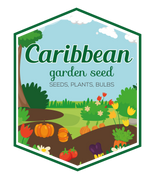
![[Seeds] - Caribbeangardenseed](http://caribbeangardenseed.com/cdn/shop/files/gift-card-gift-card-1_1024x1024_dfa857db-9150-4315-a362-7f0bb3fb9c47_60x28.png?v=1703978838)
